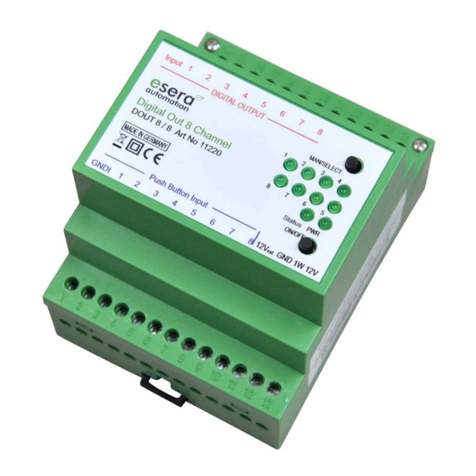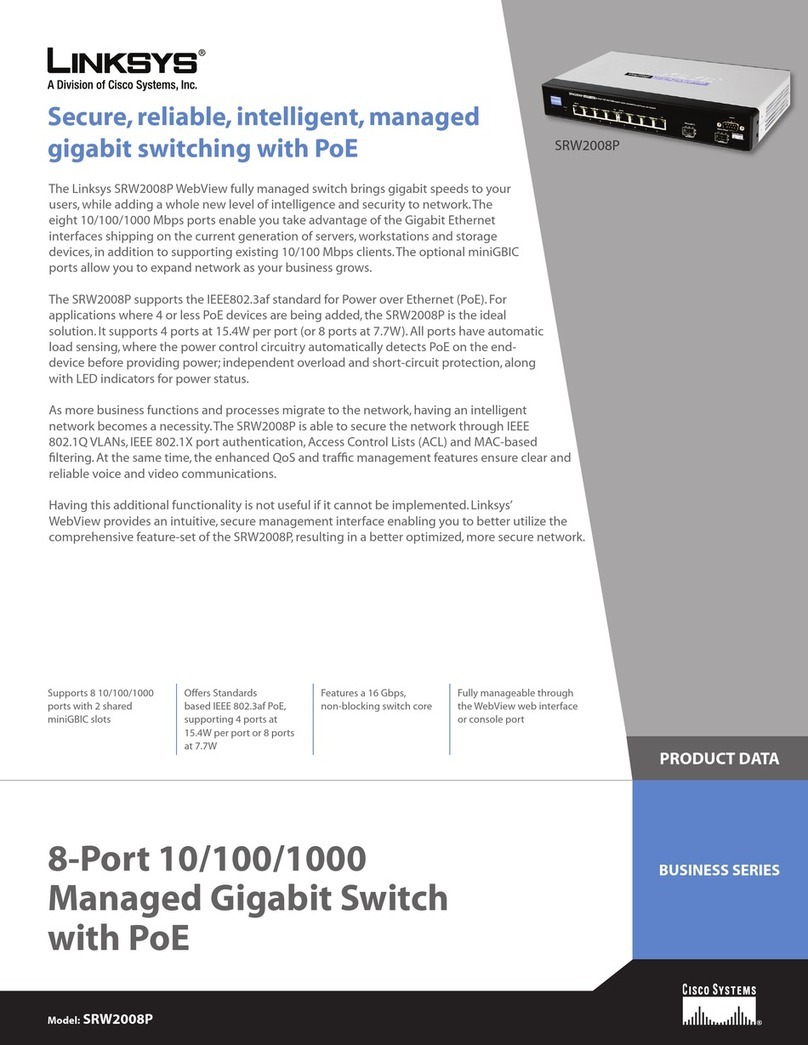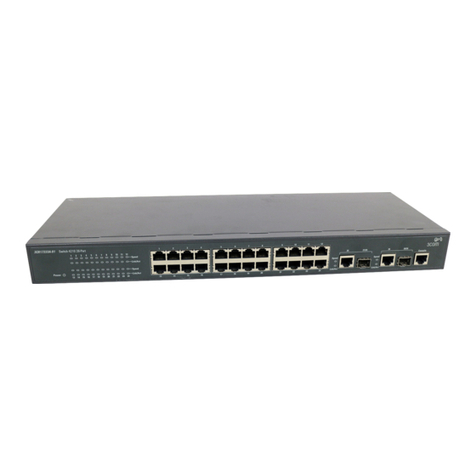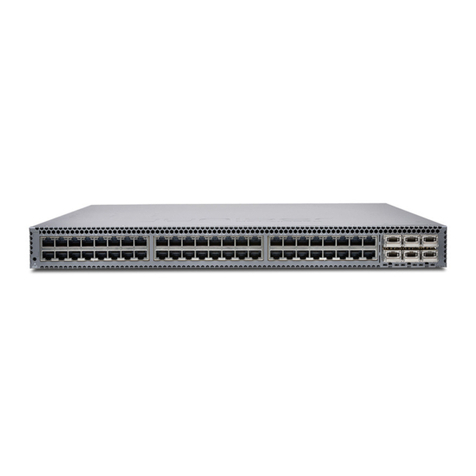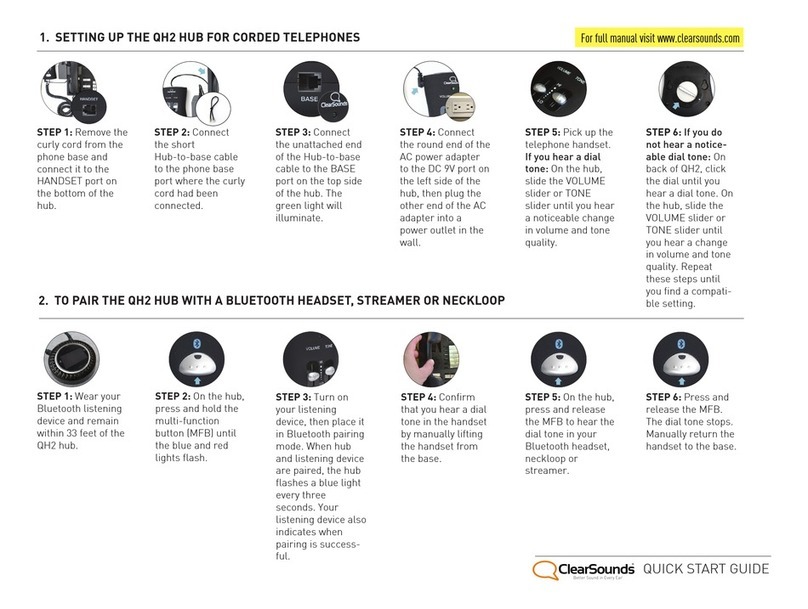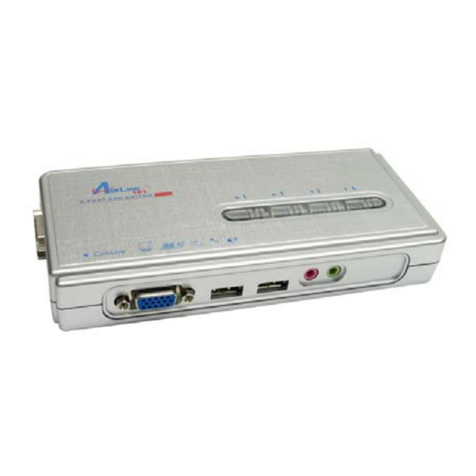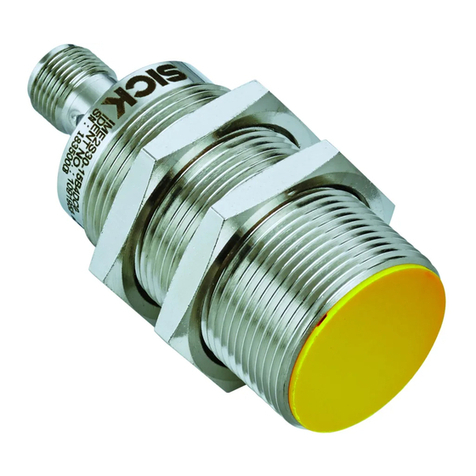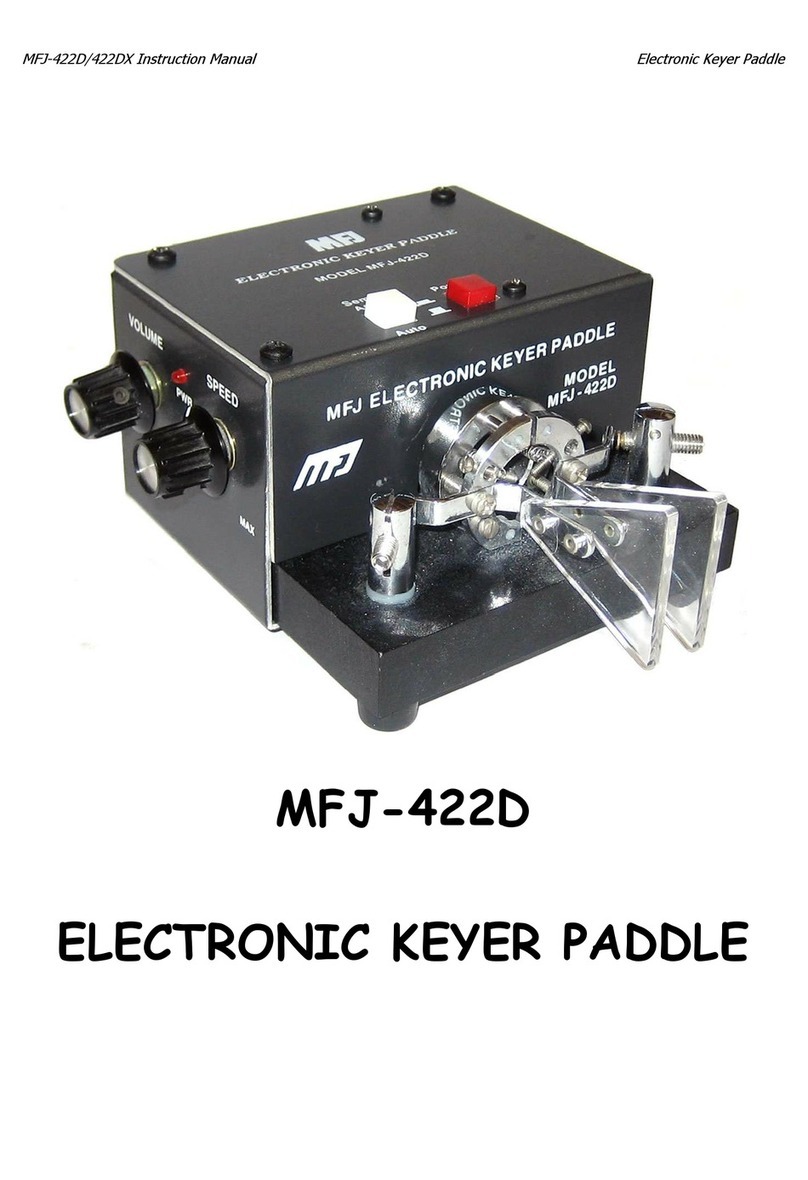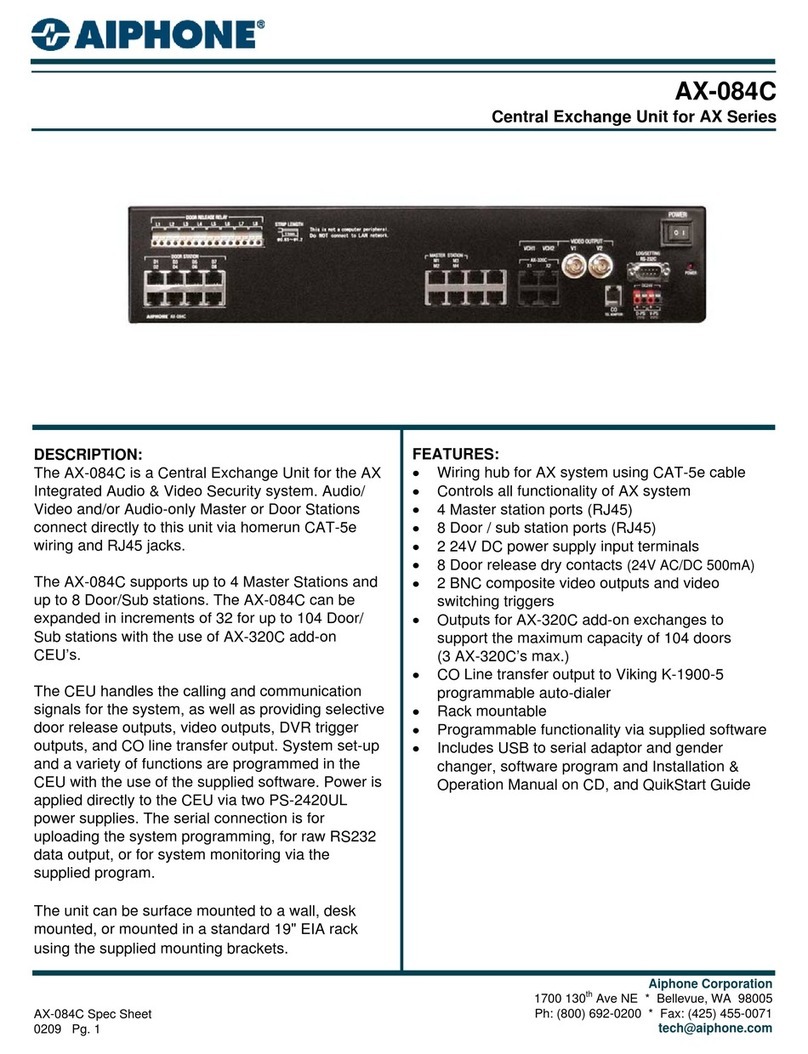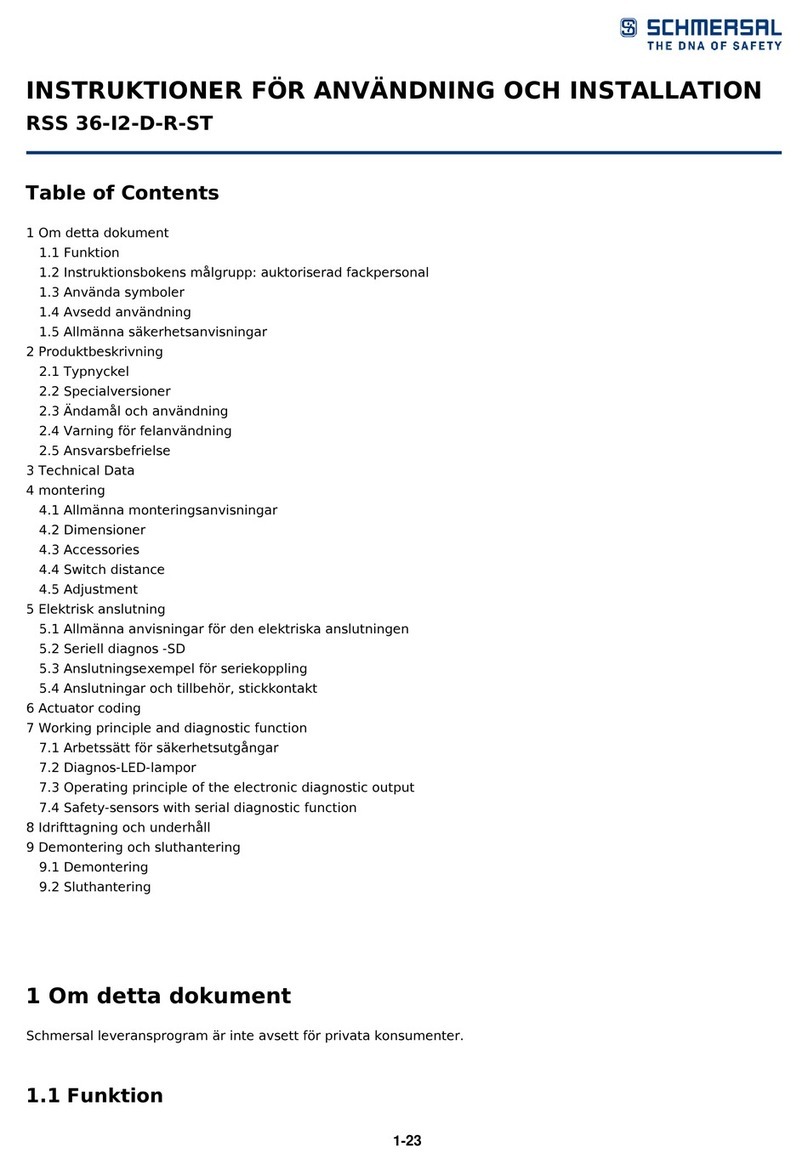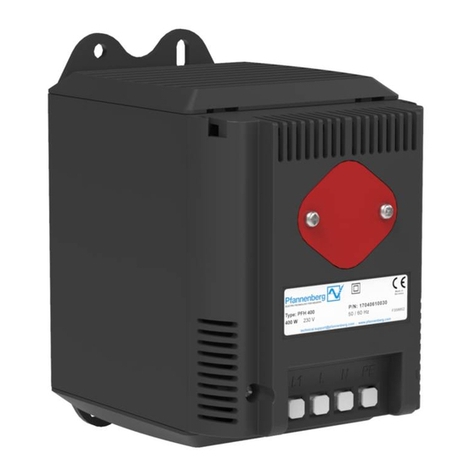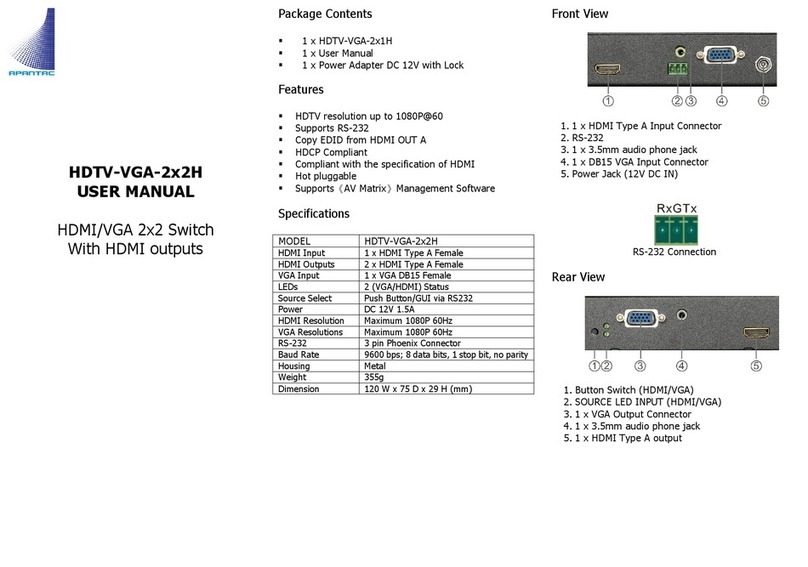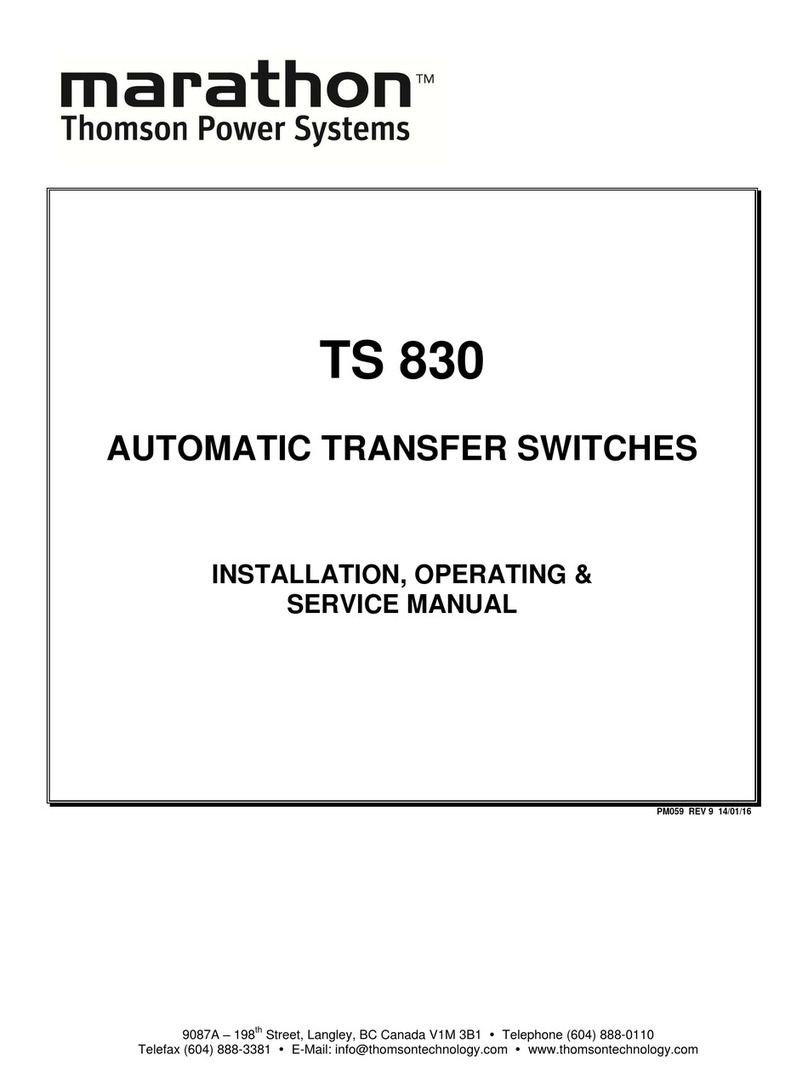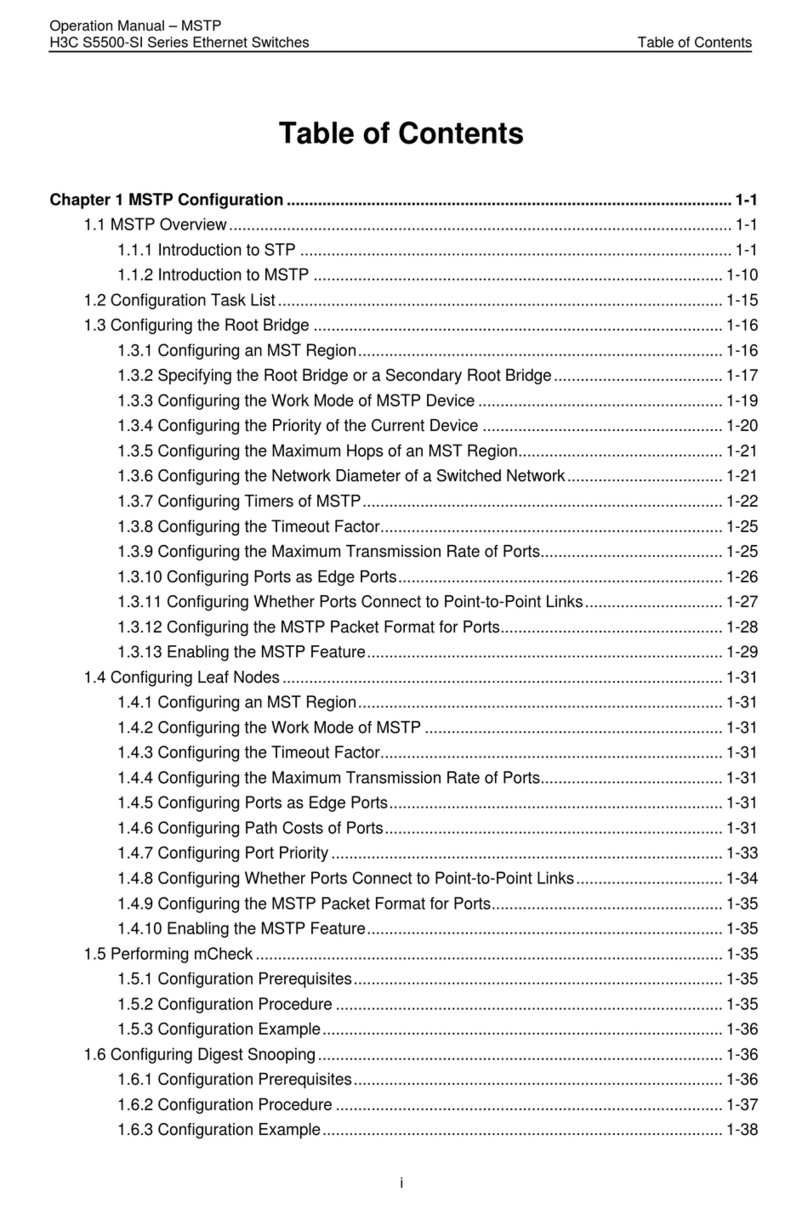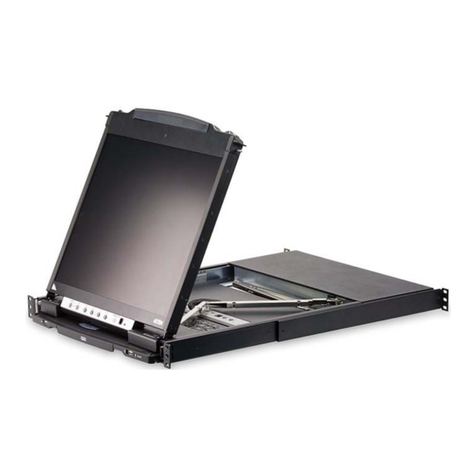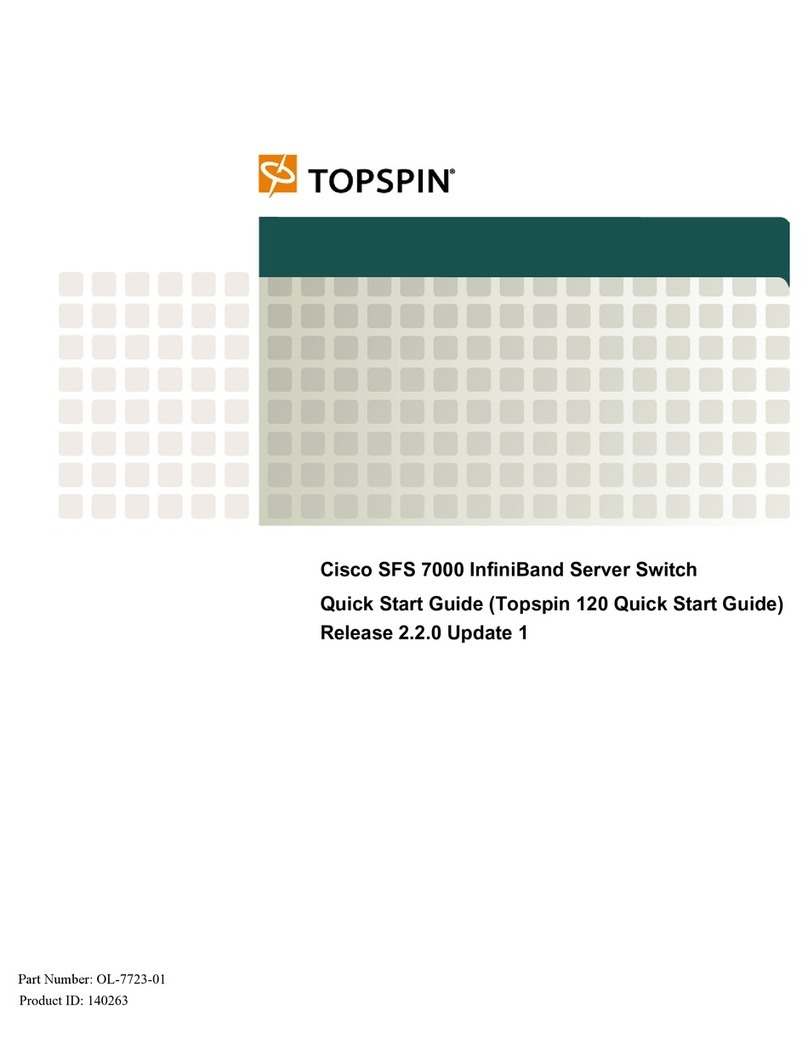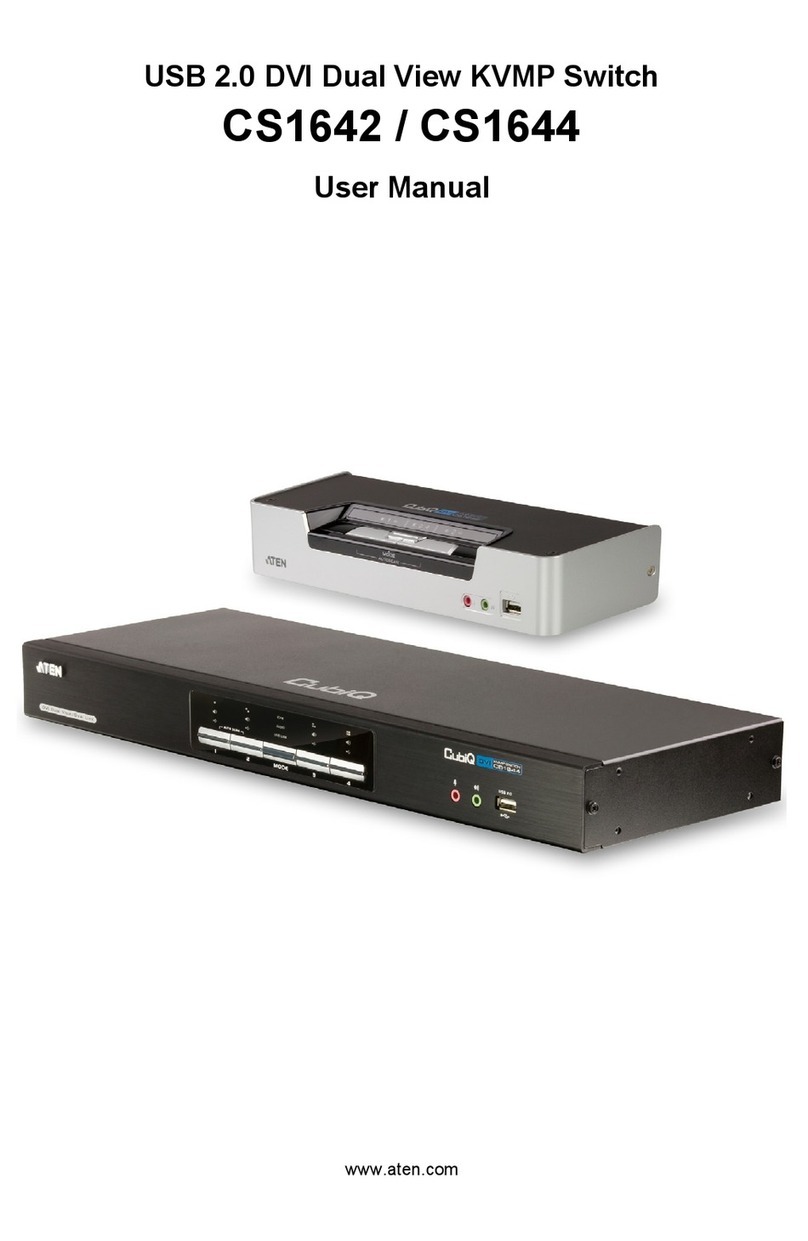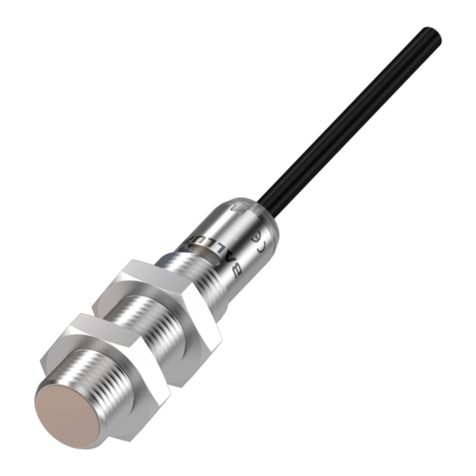esera automation 11233 User manual

All rights reserved. Reproduction as well as electronic duplication of this user manual, complete or in part, requires the written consent of
ESERA-Automation or E-Service GmbH. Errors and technical modification subject to change. ESERA-Automation, E-Service GmbH 2019
www.esera.de 11233 V1.0 R1.1 Manual Page 1 of 7
Art. No. 11233
User Guide
Binary Output / Dual Switch Module
for 1-Wire Bus
Two changeover relays with 10A continuous power rating
Control inputs for button and 1-Wire Bus
LED indicator for activated relays
Switching of direct power and alternative power consumers,
e. g. lighting, heating or sockets
DIN rail housing for switchboard assembly
Easy software-based control
Low space requirement in switchboard
Easy to assemble
New, with a DS2408 interface
1 Introduction
Before you start assembling the Dual Switch Module and before you take the device into operation, please read
these assembly and operating instructions carefully to the end, especially the section referring to the safety notes.
2 Product description
With the Dual Switch Module it is possible to connect direct power consumers and alternative power consumers
with an output of up to 10A continuous power. It is also possible to control motors.
The Dual Switch Module can either be controlled directly by an external button or by button on the module top
side, independent of the 1-Wire interface. For switch operation only 12 V power is required. Thus, a high
reliability, e.g. for switching of lightings, outlet circuits or other consumers can be reached, even in case of a
breakdown of a central control / software.
To operate the switch module we recommend the use of one of our 1-Wire Hub modules.

All rights reserved. Reproduction as well as electronic duplication of this user manual, complete or in part, requires the written consent of
ESERA-Automation or E-Service GmbH. Errors and technical modification subject to change. ESERA-Automation, E-Service GmbH 2019
www.esera.de 11233 V1.0 R1.1 Manual Page 2 of 7
3 Technical data
Switching channels: 2, changeover relay (NO and NC contact)
Switching voltage: maximum 250V direct power voltage or alternative power voltage
Switching power/power: maximum 10A continuous current, maximum 2200VA continuous current at Ohm
resistive load. minimum load 10mA
In case of capacitive or inductive loads, appropriate additional wirings, e.g. spark
suppressor capacitors must be considered. Maximum power and output will be reduced.
Fuses: External preliminary fuse with 10A recommended
Data interface: 1-Wire Bus (12V, data and ground)
1-Wire component: DS2413 (Dual I/O)
Supply voltage: 12VDC (+/-10 %)
Power consumption12V: Idle mode, no output relay active: approx. 6mA
both output relays are active: approx. 75mA in normal mode, approx. 40mA in power
saving mode
Button interface: 2, input for button (make contact), no external power allowed
Connection: Screw terminals (up to 2,5qmm wire cross section)
4 Ambient conditions
Temperature, operation: 0 °C up to +50 °C
Air humidity: 10 –92 % (non-condensing)
Measurements: 35 x 90 x 70mm (BxHxD)
Protection class: II
Protection type: IP20
Insulation strength: 500VAC output to 1-Wire Bus, 250VAC output to output
5 Connection plan
Connection plan is available in our webshop
as own document
Note: a 10A preliminary fuse is required
in front of the screw terminals 8 and 11
Connection module top side:
7 = Relay 1, make contact
8 = Relay 1, input
9 = Relay 1, NC
10 = Relay 2, NC
11 = Relay 2, input
12 = Relay 2, make contact
1-Wire Bus
Module bottom side:
1 = GND (ground)
2 = 1-Wire data line
3 = +12V power
4 = GND (ground)
5 = Button interface 1, no external power allowed
6 = Button interface 2, no external power allowed

All rights reserved. Reproduction as well as electronic duplication of this user manual, complete or in part, requires the written consent of
ESERA-Automation or E-Service GmbH. Errors and technical modification subject to change. ESERA-Automation, E-Service GmbH 2019
www.esera.de 11233 V1.0 R1.1 Manual Page 3 of 7
Art. No. 11233
6 Connection Example
The following example shows 1-Wire Controller or 1-Wire Gateway, Dual Digital Output and 8-channel digital
input:

All rights reserved. Reproduction as well as electronic duplication of this user manual, complete or in part, requires the written consent of
ESERA-Automation or E-Service GmbH. Errors and technical modification subject to change. ESERA-Automation, E-Service GmbH 2019
www.esera.de 11233 V1.0 R1.1 Manual Page 4 of 7
7 Conformity
EN 50090-2-2,
EN 61000-4-2, ESD
EN 61000-4-3, HF
EN 61000-4-4, Burst
EN 61000-4-5, Surge
EN 61000-6-1, Fault-free operation
EN 61000-6-3, Stray radiations
RoHS
8 LED display and button
The module has two LED displays.
Indicator
Designation
LED Function
LED Green
Output 1
- LEDs flash at system start-up
- LED is lit when an output relay is active
- Indicator for power saving mode
LED Green
Output 2
- LEDs flash at system start-up
- LED is lit when an output relay is active
Button
Designation
Button function
1 internal
Output 1 On/Off
Button 1 has two different functions
- Changeover of relay 1
- Power saving mode on/off
For details refer to chapter „Power saving mode“
2 internal
Output 2 On/Off
Changeover of relay 2
1 external
Output 1 On/Off
Changeover of relay 1
2 external
Output 2 On/Off
Changeover of relay 2
9 Button and 1-Wire Interfaces
In addition to the buttons on the top side of the module, the module has an external button-interface to connect
two external buttons (make contact). This means, light switches can be connected to the external button interface
to control on/off light commands. For connection regular light switches of all manufacturers can be used.
Within the module, a µ-controller takes over the query of the buttons, the 1-Wire interface and the control of the
relays. Flank control is used to query buttons and 1-Wire component.
The switching status of the relays can be set via the external and internal buttons. Relays can also be set by the
1-Wire Interface. The state of the relay can be read via the 1-wire interface.
External and internal control inputs:
Button interface, external button 1
Button interface, external button 2
Module top side, button 1 internal
Module top side, button 2 internal
1-Wire component, DS2413 channel 0
1-Wire component, DS2413 channel 1
Do not connect any kind of power source to the external button interface! Connecting cables among the module
and the button to other cables should be insulated. In idle mode 5 V direct power can be measured at the
connections of the button interface.
10 Software / Control
The component is being controlled by 1-Wire Commands for the component DS2413. The relay state will be read
out automatically by the 1-Wire Interface. Relays set via pushbutton interface or manual mode can be read back
via the 1-wire interface.
Available 1-Wire commands
Read ROM 33h 64-BIT ROM, RC-FLAG
Match ROM 55h 64-BIT ROM, RC-FLAG
Search ROM F0h 64-BIT ROM, RC-FLAG
Skip ROM CCh RC-FLAG
Read PIO Registers F0h Input und Output Status, Bit 0-2 for Channel 0 und 1
Channel Access Write 5Ah Port Output Latches / Status, Bit 0-2, values greater than 3 are ignored

All rights reserved. Reproduction as well as electronic duplication of this user manual, complete or in part, requires the written consent of
ESERA-Automation or E-Service GmbH. Errors and technical modification subject to change. ESERA-Automation, E-Service GmbH 2019
www.esera.de 11233 V1.0 R1.1 Manual Page 5 of 7
Art. No. 11233
11 Control by 1-Wire Controller / 1-Wire Gateway
The 1-Wire interface of the Dual Digital switching module is controlled by standard commands for the DS2408
module. Relays switched by the pushbutton interface or in manual mode can be read back via the 1-wire
interface. The Dual Digital switching module can easily be controlled by a 1-wire controller / 1-wire gateway. For
this purpose the following two commands are available.
11.1 Switching of an output relay
To switch a relay output, use the following command to set only the output selected to 0 or 1.
Command: SET,OWD,OUT,OWD- Number, Output, Value
Example: set,owd,out,2,1,1 => OWD Number 2, output 2 will be switched to “on”.
After switching the output latest status will be output as confirmation.
11.2 Switching of all output relays (Port)
Some applications require switching of all outputs with one command.
The following command sets both outputs of the 1-Wire device to a desired state. The 1-wire controller / 1-wire
gateway handles the command adaptation to the connected Dual Digital switching module.
Output value is displayed as a decimal value 0-3. Each relay output has a significance, which is added up.
Output value 0 = all off, 1 = output 1 active, 2 = output 2 active
If output 1 and 2 should be switched to "active", add up the output values
Example: Output value: 1 + 2 = 3
Permitted output values for 1-Wire digital outputs: 0 - 3
Command: SET,OWD,OUTH,OWD- Number, Output Value
Example: set,owd,outh,2,3 => OWD Number 2, outputs 1 and 2 will be switched to „active“
After switching the output latest status will be output as confirmation.
11.3 Data output 1-Wire Controller / 1-Wire Gateway
For the Dual Switch Module the following data are output to display relay status.
Data output:
1_EVT|12:27:40
1_OWD1_1|1 => Controller No._module No._record | decimal value input
1_OWD1_2|00000001 => Controller No._module No._record | binary display input
1_OWD1_3|7 => Controller No._module No._record | decimal value output
1_OWD1_4|00000111 => Controller No._module No._record | binary display output
Further information for options and commands can be found in the latest available documentation for 1–Wire
Controller / 1–Wire Gateway.
12 Operating conditions
The operation of the assembly group can take place only on condition of observing the required voltage and the
ambient conditions. The operating position of the device is irrelevant. The device is meant to be used in dry
areas free of dust.
Should condensed water build up within the sensor, an acclimatization period of at least 2 hours must be met.
The components can be operated only under the supervision of an electrically skilled person. Assembly groups
and components do not belong into the hands of children
In industrial facilities, the accident prevention regulations of the federation of industrial professional associations
for electrical installations and equipment must be observed. Do not operate the components in an environment
with inflammable gases, vapors or dusts or in an environment where such gases, vapors or dusts may occur.

All rights reserved. Reproduction as well as electronic duplication of this user manual, complete or in part, requires the written consent of
ESERA-Automation or E-Service GmbH. Errors and technical modification subject to change. ESERA-Automation, E-Service GmbH 2019
www.esera.de 11233 V1.0 R1.1 Manual Page 6 of 7
13 Assembly
The mounting place must be protected against moisture. The module may only be used in dry indoor rooms or in
protected outside areas. The device is designed for fixed installation within a switching cabinet.
14 Disposal instructions
Do not dispose this device in the household waste. Electronic devices must be disposed in
accordance with directives for disposing of waste electrical and electronic equipment at local
collection points for electronic waste material.
15 Safety Instructions
When using products that come into contact with electrical voltage, the valid VDE regulations must be
observed, especially VDE 0100, VDE 0550/0551, VDE 0700, VDE 0711 and VDE 0860
During final works and wiring works power has to be de-connected.
Before opening the device, always unplug and make sure that the unit is disconnected from the mains.
Components, modules or devices may only be put into service if they are mounted in a contact proof housing. During
installation they must not have power applied.
Tools may only be used on devices, components or assemblies when it is certain that the devices are disconnected
from the power supply and electrical charges stored in the components inside the device have been discharged.
Live cables or wires to which the device or an assembly is connected, must always be tested for insulation faults or
breaks.
If an error is detected in the supply line, the device must be immediately taken out of operation until the faulty cable
has been replaced.
When using components or modules it is absolutely necessary to comply with the requirements set out in the
accompanying description specifications for electrical quantities.
If the available description is not clear to the non-commercial end-user what the applicable electrical characteristics
for a part or assembly are, how to connect an external circuit, which external components or additional devices can
be connected or which values these external components may have, a qualified electrician must be consulted.
It must be examined generally before the commissioning of a device, whether this device or module is basically
suitable for the application in which it is to be used.
In case of doubt, consultation with experts or the manufacturer of the components used is absolutely necessary.
For operational and connection errors outside of our control, we assume no liability of any kind for any resulting
damage.
Kits should be returned without their housing when not functional with an exact error description and the
accompanying instructions. Without an error description it is not possible to repair the device. For time-consuming
assembly or disassembly of cases charges will be invoiced.
During installation and handling of components which later have mains potential on their parts, the relevant VDE
regulations must be observed.
Devices that are to be operated at a voltage greater than 35 VDC / 12mA, may only be connected by a qualified
electrician and put into operation.
Commissioning may only be realized if the circuit is built into a contact proof housing.
If measurements with an open housing are unavoidable, for safety reasons an isolating transformer must be installed
upstream or a suitable power supply can be used.
After installing the required tests according to DGUV / regulation 3 (German statutory accident insurance,
https://en.wikipedia.org/wiki/German_Statutory_Accident_Insurance) must be carried out.
16 Warranty
ESERA-Automation (E-SERVICE GmbH) guarantees that the goods sold at the time of transfer of risk to be free from material
and workmanship defects and have the contractually assured characteristics. The statutory warranty period of two years
begins from date of invoice. The warranty does not extend to the normal operational wear and normal wear and tear.
Customer claims for damages, for example, for non-performance, fault in contracting, breach of contractual obligations,
consequential damages, damages for tort and other legal grounds are excluded. Excepting to this, ESERA-Automation
accepts liability for the absence of a guaranteed quality resulting from intent or gross negligence. Claims made under the
Product Liability Act are not affected. If defects occur for which the ESERA-Automation is responsible, and in the case of
replacement goods, the replacement is faulty, the buyer has the right to have the original purchase price refunded or a
reduction of the purchase price. ESERA-Automation accepts liability neither for the constant and uninterrupted availability of
ESERA-Automation or for technical or electronic errors in the online offer.
We develop our products further and we reserve the right to make changes and improvements to any of the products
described in this documentation without prior notice. If you need documentation or information about older product versions,

All rights reserved. Reproduction as well as electronic duplication of this user manual, complete or in part, requires the written consent of
ESERA-Automation or E-Service GmbH. Errors and technical modification subject to change. ESERA-Automation, E-Service GmbH 2019
www.esera.de 11233 V1.0 R1.1 Manual Page 7 of 7
Art. No. 11233
17 Trademarks
All mentioned designations, logos, names and trademarks (including those which are not explicitly marked) are trademarks,
registered trademarks or other copyright or trademark or title legally protected designations of their respective owners and are
hereby recognized as such by us. The mention of these designations, logos, names and trademarks is made for identification
purposes only and does not represent a claim any kind on the part of ESERA-Automation, Andreas Geisler on these
designations, logos, names and trademarks. Moreover, from their appearance at ESERA-Automation webpages it cannot be
concluded that designations, logos and names are free of commercial property rights.
ESERA is a registered trademark of E-Service GmbH.
18 Contact
ESERA-Automation
E-Service GmbH
Adelindastrasse 20
87600 Kaufbeuren
Tel.: +49 8341 999 80-0
Fax: +49 8341 999 80-10
www.esera.de
WEEE-Nummer: DE30249510
Table of contents
Other esera automation Switch manuals

